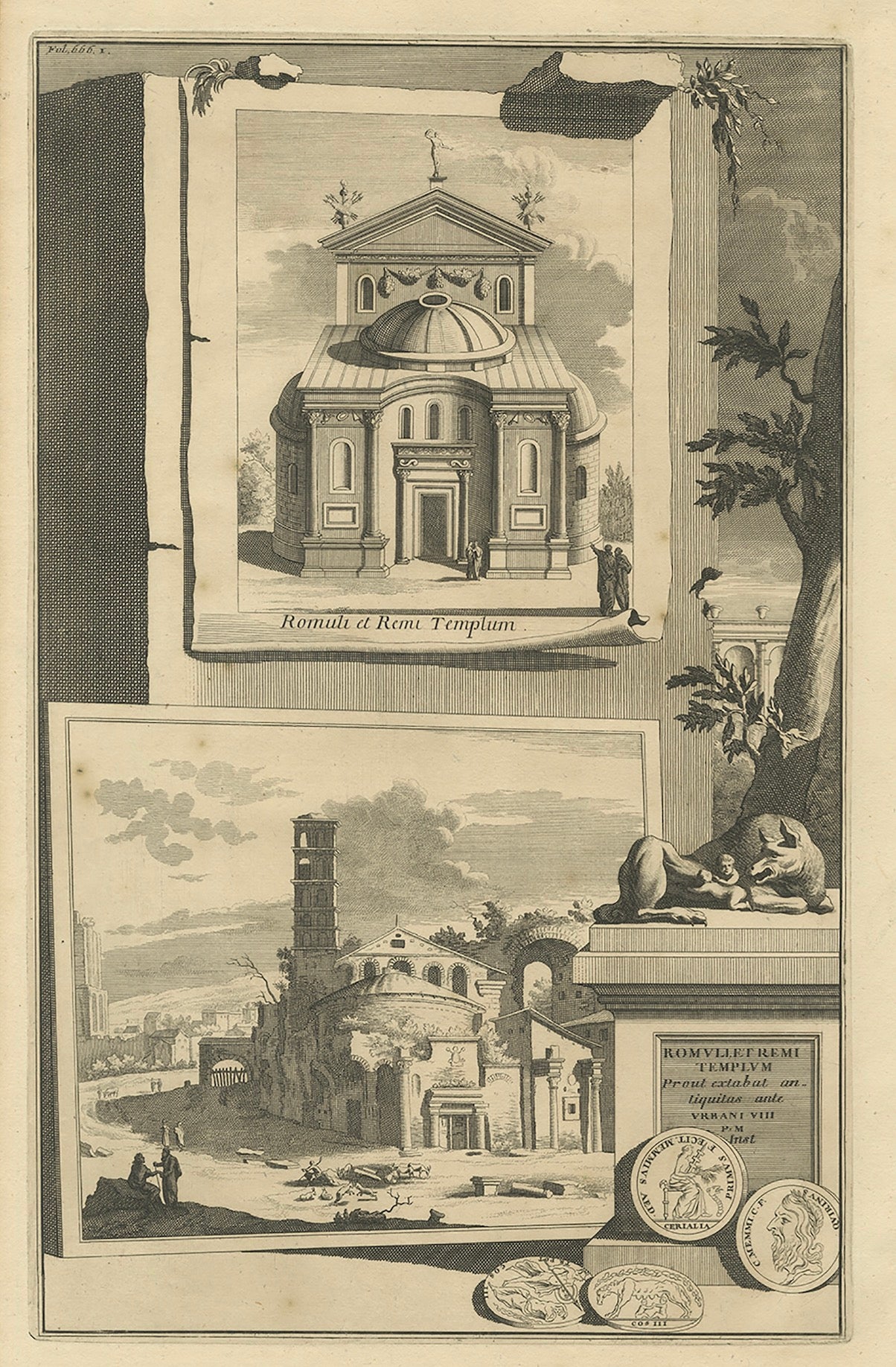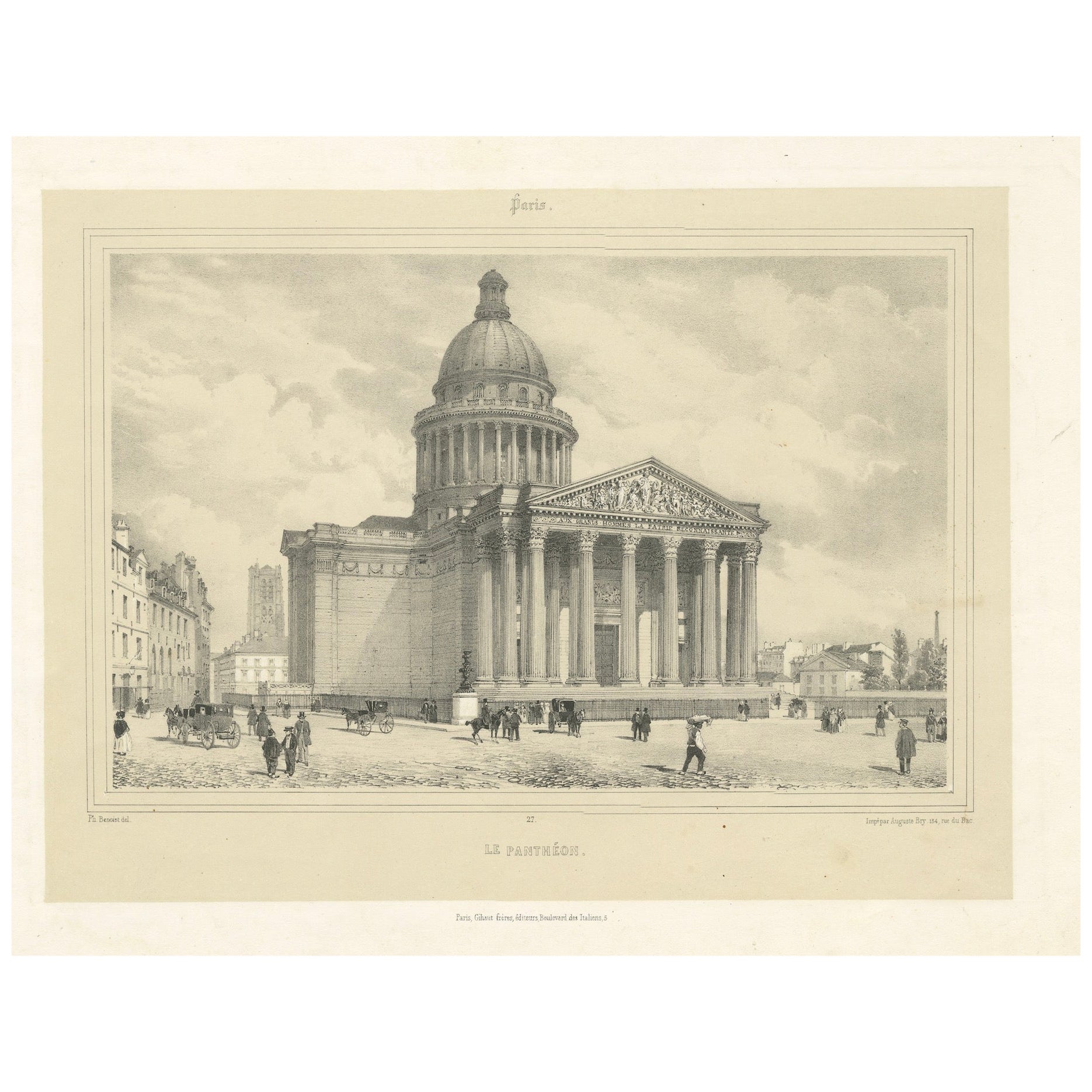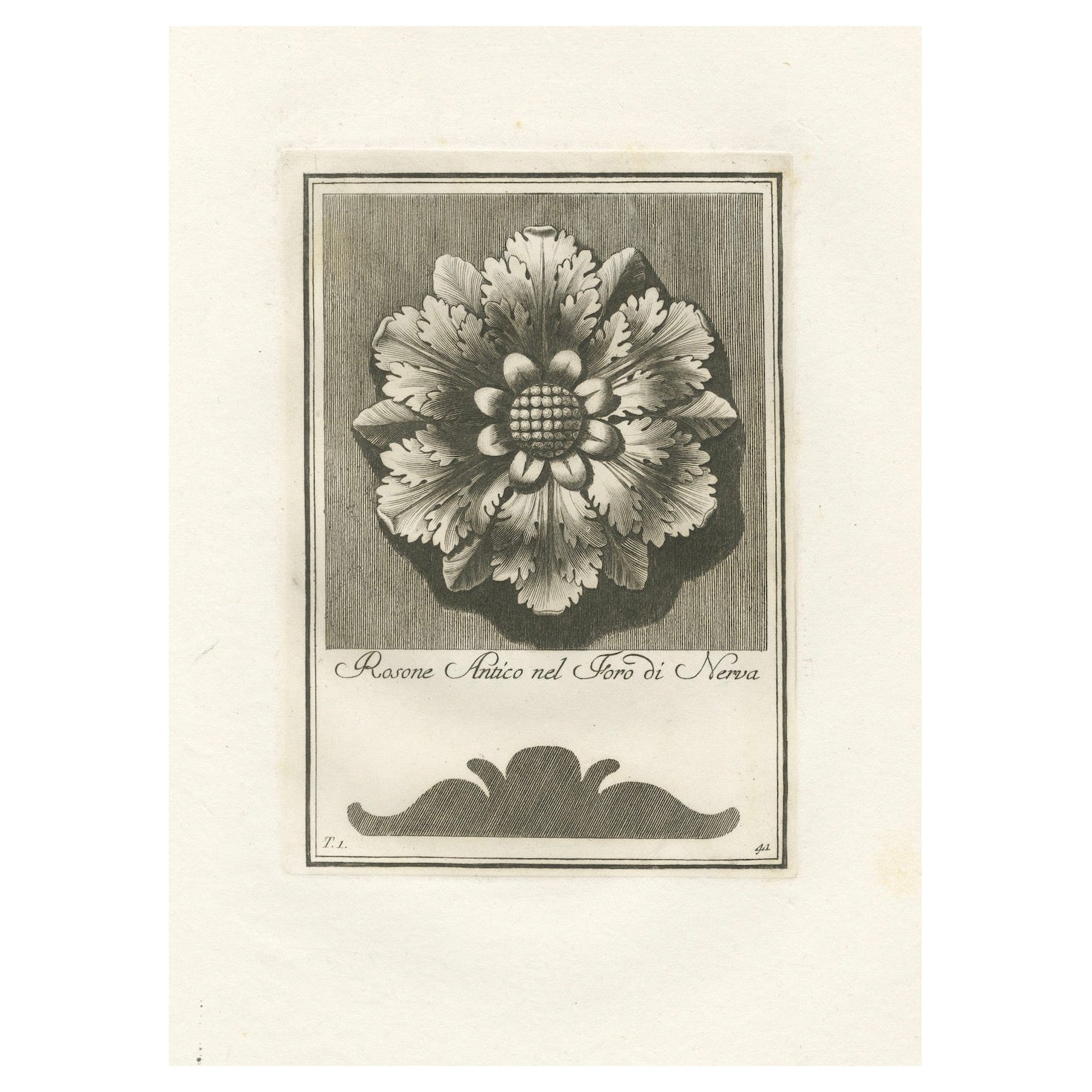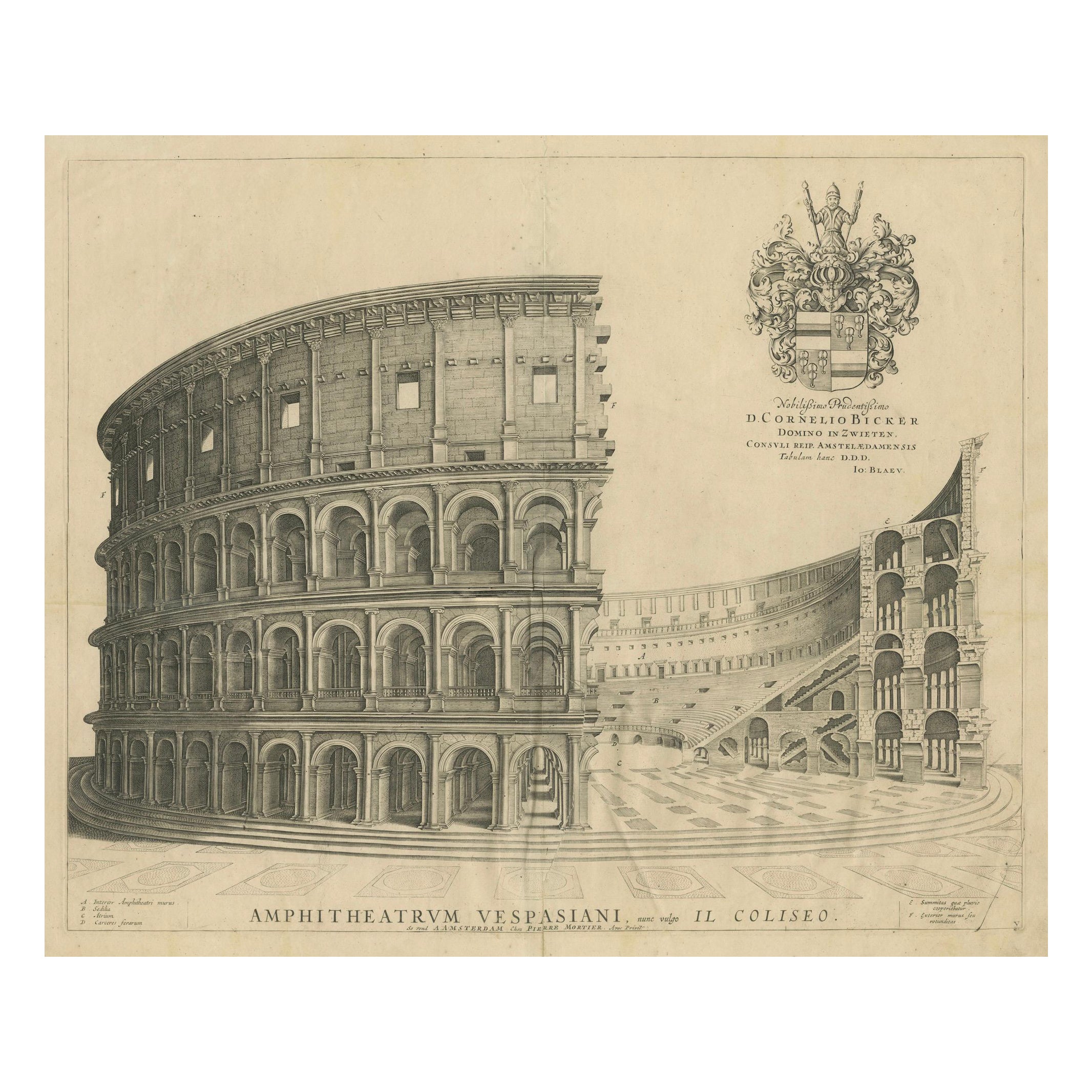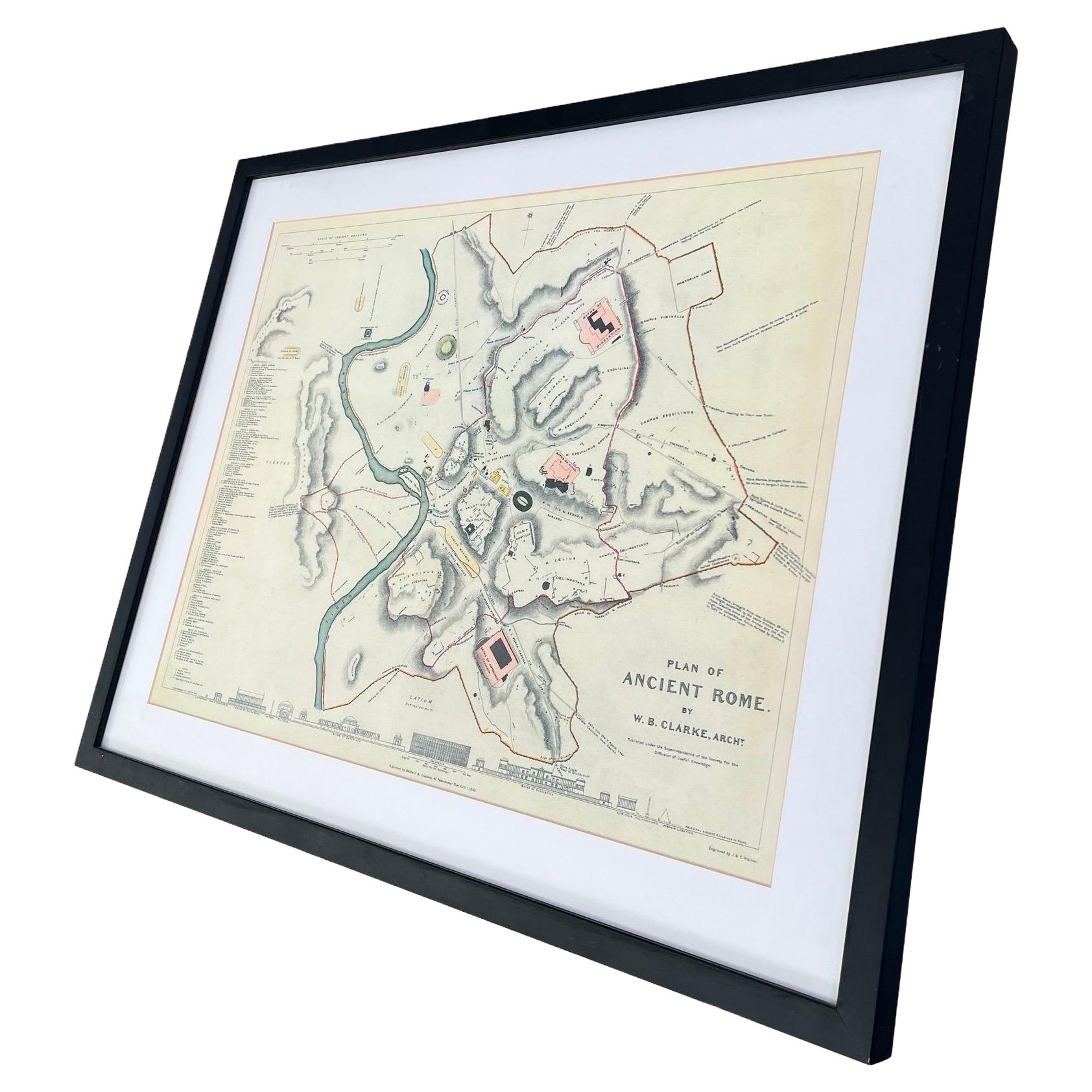Items Similar to Eternal Echoes Engraved: The Pantheon, Rome's Ancient Marvel, circa 1705
Want more images or videos?
Request additional images or videos from the seller
1 of 6
Eternal Echoes Engraved: The Pantheon, Rome's Ancient Marvel, circa 1705
About the Item
The engraving titled "Pantheon nunc vulgo la Rotunda" is attributed to the publishing efforts of Joan Blaeu and was part of a series published around the early 18th century. Joan Blaeu was a renowned Dutch cartographer born in 1599 and who passed away in 1673. His works often featured detailed engravings of notable locations. This particular piece would have been published posthumously, as part of a collection that his heirs continued, which was later reissued by publishers like Pierre Mortier. The exact date of publication for this specific engraving is not provided in the information, but it would be within the timeframe of the early 1700s, given the dates of the reissues mentioned.
The Pantheon, which is depicted in your engraving, was initially built around 27 BC by Marcus Vipsanius Agrippa, as mentioned on the façade's inscription. It was later rebuilt by Emperor Hadrian between 118 and 128 AD on the site of Agrippa's original temple, which had been destroyed. Contrary to what the inscription might suggest, Hadrian decided to credit Agrippa rather than himself. This choice contributed to some confusion regarding the origins of the building throughout history.
The structure is celebrated for its remarkable construction, particularly its dome, which was the largest built until modern times and remains the largest unreinforced concrete dome in the world today. The Pantheon's design has been influential in architecture, inspiring numerous buildings across the world. It has been continuously used throughout its history, which has contributed significantly to its excellent state of preservation. Since the 7th century, it has served as a church dedicated to St. Mary and the Martyrs but is informally known as "Santa Maria Rotonda".
Today, the Pantheon is not only a church but also a major tourist attraction, visited by millions of people every year. It also serves as a final resting place for notable figures such as the painter Raphael and several Italian kings.
- Dimensions:Height: 16.34 in (41.5 cm)Width: 22.45 in (57 cm)Depth: 0 in (0.02 mm)
- Materials and Techniques:Paper,Engraved
- Period:
- Date of Manufacture:circa 1705
- Condition:Repaired: two small remains of tape on reverse for support of the top corners. Good, considering age. A small tear in the folding line and two small remains of tape on reverse. Aged paper with typically warm, yellowish-brown hue. Light foxing and scattered tiny inkt spots. Study the scans carefully.
- Seller Location:Langweer, NL
- Reference Number:
About the Seller
5.0
Platinum Seller
These expertly vetted sellers are 1stDibs' most experienced sellers and are rated highest by our customers.
Established in 2009
1stDibs seller since 2017
1,938 sales on 1stDibs
Typical response time: <1 hour
- ShippingRetrieving quote...Ships From: Langweer, Netherlands
- Return PolicyA return for this item may be initiated within 14 days of delivery.
More From This SellerView All
- Antique Print of the Temple of Romulus in Rome, Italy C.1705Located in Langweer, NLAntique print titled 'Romuli et Remi Templum - Remuliet remi Templum'. This print shows the Temple of Romulus in Rome. Made by or after J. Goeree. The antique print, titled 'Romuli...Category
Antique 18th Century Prints
MaterialsPaper
- Decorative Engraved Panthéon Paris in the 1800s by Bry & BenoistLocated in Langweer, NLThe image is an engraving of the Panthéon in Paris, created by Auguste Bry (1805–1880) and Philippe Benoist (1813–). The Panthéon originally served as a church dedicated to St. Gen...Category
Antique 1850s Prints
MaterialsPaper
- Echoes of Elegance: The Engraved Legacy of Carlo Antonini, 1780Located in Langweer, NLA fine example of an 18th-century botanical engraving. Created by Carlo Antonini between 1777 and 1790, it showcases a detailed depiction of a flower in full bloom. The illustration is highly detailed, with individual petals, stamens, and shading rendered with precision, indicating a high level of craftsmanship and attention to detail that was characteristic of botanical illustrations of the period. The image is likely part of a larger work, perhaps a botanical compendium or study, which would have been used for both scientific study and artistic appreciation. The text at the bottom of the print, "Rarone Antico nel Foro di Nerva," analysed: The phrase "Rosone Antico nel Foro di Nerva" could potentially be translated as "Ancient Rosette in the Forum of Nerva." Breaking down the phrase: - "Rosone" typically refers to a "rose window," a large circular window with mullions and tracery radiating in a form suggestive of a rose, commonly found in Gothic architecture. However, in this context, without the surrounding content, it might refer to a specific design or feature that is described as "antique" or ancient. - "Antico" means "ancient" or "antique," indicating that the item or feature referred to as "Rosone" is of historical significance or from a past era. - "Foro di Nerva" refers to the Forum of Nerva, which is one of the Imperial Forums in Rome. Therefore, the phrase seems to describe an ancient or historically significant rosette (or possibly a design or feature similar to a rose window) located in the Forum of Nerva. This might be referencing a specific architectural detail or decorative element that was part of the forum's structure or adornment. For a detailed analysis or historical context, you would typically need to consult historical texts, architectural studies, or archaeological reports related to the Forum of Nerva. The style of the print suggests that it was created using engraving techniques that involve incising a design onto a hard surface (like a copper plate), which was then inked and used to produce the image on paper. This method allowed for reproductions of the design and was commonly used for scientific illustrations because it could capture intricate details with great accuracy. Such prints would have been important in the 18th century for the dissemination of botanical knowledge, contributing to the fields of botany, horticulture, and medicine. They also reflect the Enlightenment's value on reason and empirical evidence, where plants were not only appreciated for their beauty but also studied for their structure and utility. Carlo Antonini's notable work includes a series of 85 etchings that were published in Rome in 1780, dedicated to Count Stanislao Potocki. This collection, titled "Serie di LXXXV disegni in varie grandezze composti dal celebre pittore Salvator Rosa publicati ed incisi da Carlo Antonini," consists of reproductions of Salvator Rosa's 'Figurine' series and other prints. It includes various pieces like a title-page with a coat of arms, a dedication, a preface, and several other individual works ranging from small prints to larger ones, such as depictions of mythical and historical scenes. The etchings were printed in sanguine ink, indicative of the period's artistic preferences for printmaking. These works are an example of Antonini's precision in reproducing another artist's work and are recognized for their faithfulness to Rosa's original designs. Additionally, Antonini is associated with other works such as the "Manuale di varj ornamenti componenti la serie de' vasi antichi," a collection that includes designs and engravings of ancient vases, and prints dedicated to the Duomo Di Orvieto. Another significant piece is his engraving titled "Prospetto degli Orti Farnesiani sul Monte Palatino," which was created in collaboration with Francesco Panini...Category
Antique 1780s Prints
MaterialsPaper
- Venerable Vespasian's Arena: The Colosseum in its Prime, circa 1705Located in Langweer, NLThe engraving titled "Amphitheatrum Vespasiani, nunc vulgo Il Coliseo" is an early 18th-century Dutch engraving, originally published by Joan Blaeu and reissued by Pierre Mortier bet...Category
Antique Early 18th Century Prints
MaterialsPaper
- Steel Engraved Map of Ancient BritainLocated in Langweer, NLAntique map titled 'Angleterre Ancienne'. Original old map of Ancient Britain. Source unknown, to be determined. Published circa 1880.Category
Antique Late 19th Century Maps
MaterialsPaper
- Echoes of the Amazon: The Gold-Breasted Melody, circa 1820Located in Langweer, NLThis print is an old-colored lithography by Carl Wilhelm Hahn from around 1820 and it's listed in Nissen's bibliographic catalog of zoological books,...Category
Antique 1820s Prints
MaterialsPaper
You May Also Like
- Vintage Framed Print, Plan of Ancient RomeLocated in Seattle, WAVintage framed print. Plan of Ancient Rome. Dimensions. 27 W ; 22 H.Category
Vintage 1970s Mid-Century Modern Prints
MaterialsGlass, Wood
- Twenty Six Framed Engravings Of " Views of Ancient Buildings in Rome"Located in Essex, MABy Matthew Dubourg [British, active 1808-1838]. Complete set of 26 views of the remains of ancient buildings in Rome and its vicinity. Beautifully matted with giltwood frames. Ready ...Category
Antique 1820s English Grand Tour Prints
MaterialsGiltwood, Paper
- Original Antique Print of The Ancient City of Palmyra, Syria, circa 1840Located in St Annes, LancashireWonderful image of Palmyra, Syria Fine mezzotint engraving Published by Thomas Kelly, London, circa 1840 Unframed.Category
Antique 1840s English Greco Roman Prints
MaterialsPaper
- Dendy Sadler, "The Royal and Ancient" Golf PrintLocated in Oxfordshire, GBGolf print 'The Royal and Ancient' after Dendy Sadler. A good oak framed artist proof golf etching by James Dobie after the painting by Dendy Sadler. The ...Category
Vintage 1910s English Sporting Art Sports Equipment and Memorabilia
MaterialsOak, Paper
- Italian Contemporary Hand Painted Print Pantheon Architectural Drawing 4 of 4Located in Scandicci, FlorenceElegant and refined print representing architectural details of the famous Pantheon, with plans, sections, elevations of capitals and columns, architraves and cornices, with particul...Category
21st Century and Contemporary Italian Prints
MaterialsPaper
- Italian Contemporary Hand Painted Print Pantheon Architectural Drawing 2 of 4Located in Scandicci, FlorenceElegant and refined print representing architectural details of the famous Pantheon, with plans, sections, elevations of capitals and columns, architraves and cornices, with particul...Category
21st Century and Contemporary Italian Prints
MaterialsPaper
